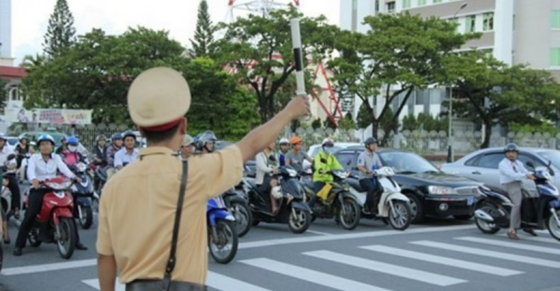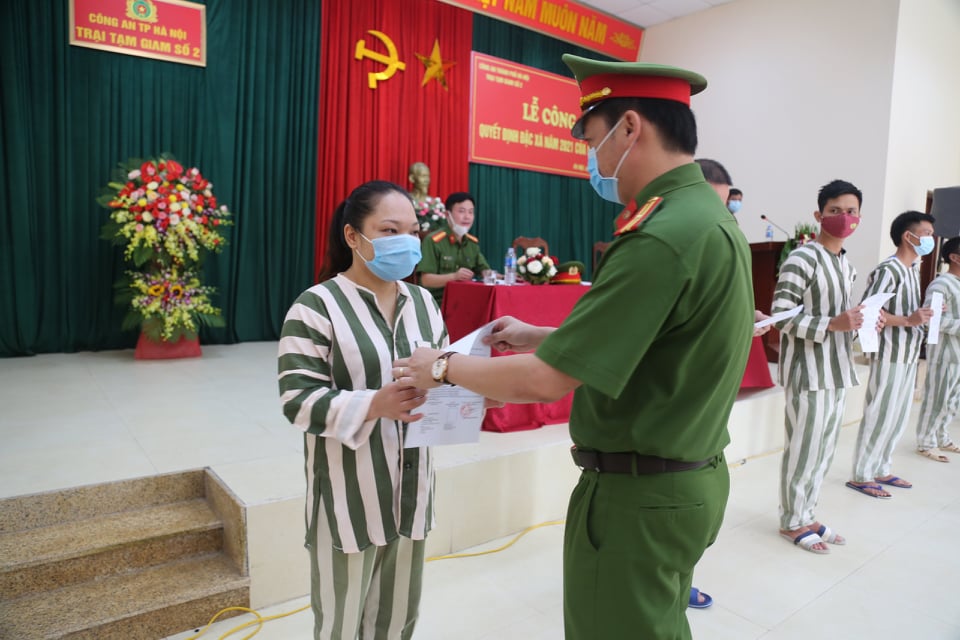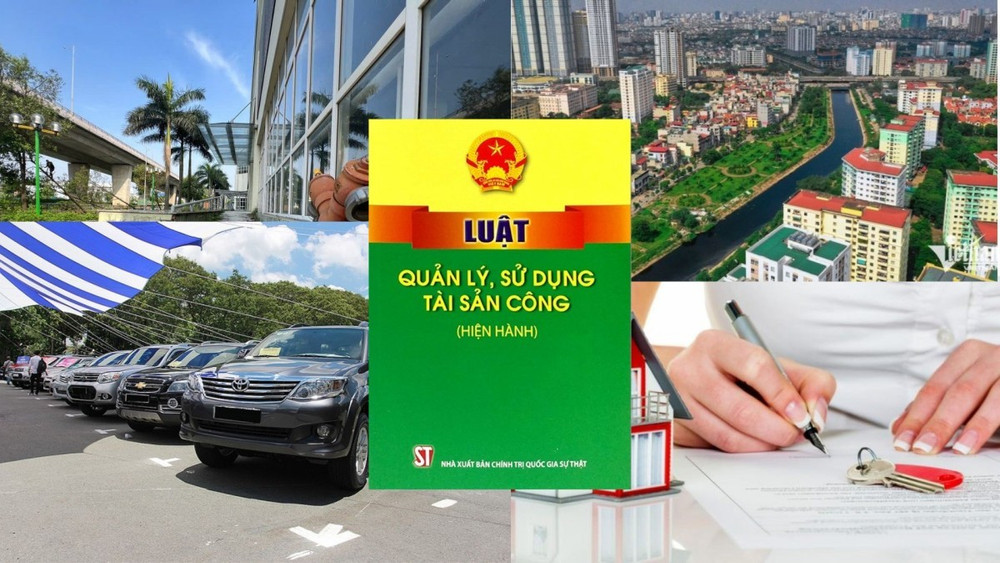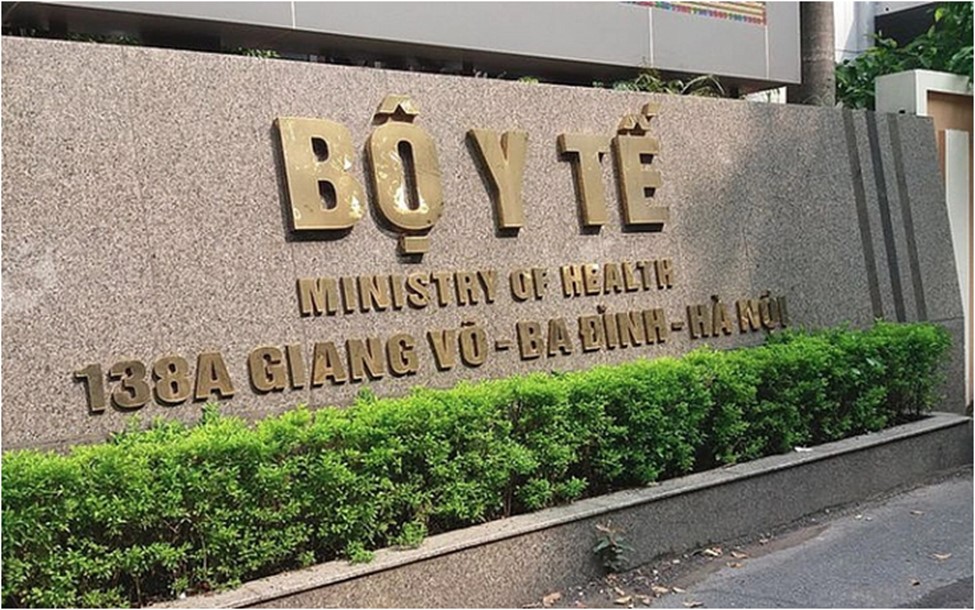Guidelines for installation of road signs in Vietnam from January 1, 2025
The article provides the guidelines for installation of road signs in Vietnam from January 1, 2025 based on legislative documents effective from January 01, 2025. To be specific:

Guidelines for installation of road signs in Vietnam from January 1, 2025 (Image from the Internet)
On June 27, 2024, Hanoi passed the Law on Road 2024.
Guidelines for installation of road signs in Vietnam from January 1, 2025
Article 23 of the Law on Road 2024 stipulates the installation of road signs as follows:
- Road signs to be installed include:
+ Traffic signal lights;
+ Road signs include: prohibition signs, danger signs, directive signs, informational signs, and supplementary signs;
+ Road markings and other signs on the road surface (collectively referred to as road markings);
+ Guard posts, reflective studs, reflective markers, kilometer markers, H posts, boundary markers;
+ Protective walls and barriers;
+ Audible road signaling devices.
- Principles for installing traffic signal lights are stipulated as follows:
+ The light faces the direction opposite to the traffic flow and should be placed where road users can easily observe;
+ Order of installation of traffic signal lights vertically: red light on top, yellow light in the middle, and green light at the bottom;
+ Order of installation of traffic signal lights horizontally: red light on the left side, yellow light in the middle, and green light on the right side according to the traffic direction;
+ The traffic signal light system, after installation, must be test operated by the investor, the road management authority to ensure it meets the road traffic organization requirements before acceptance and operational use.
- Principles for installation of road signs are stipulated as follows:
+ The sign faces the direction opposite to the traffic flow;
+ It is placed on the right side or above the roadway. In specific cases, additional signs may be placed on the left side according to the traffic direction to guide and signal road users;
+ Placed in a position where road users can easily observe and comply;
+ Supplementary signs are used to clarify prohibition signs, danger signs, directive signs, and informational signs.
- Principles for arranging road markings are stipulated as follows:
+ Road markings are a form of road signal marked on the road surface and road structures;
+ Road markings can be arranged independently or combined with road signs or traffic signal lights.
- Principles for installing posts, protective walls, reflective studs, reflective markers, kilometer markers, H posts, barriers, and boundary markers are stipulated as follows:
+ Guard posts are installed in hazardous areas and necessary locations to guide road users about the safe road section and direction of the road;
+ Reflective studs are installed on the road surface longitudinally or transversely to guide direction and lane division;
+ Reflective markers are installed in areas where the road might be confusing about the direction to guide vehicles at night or in foggy, low-visibility conditions;
+ Kilometer markers are installed ensuring the distance between two consecutive markers is 1,000 meters. In special cases, the distance between two consecutive markers can be more or less than 1,000 meters. Kilometer markers are used in road management, operation, exploitation, construction, renovation, maintenance, and to locate road facility issues, traffic congestion, road traffic accidents; helping road users determine the distance of road sections;
+ H posts are installed between two consecutive kilometer markers ensuring the distance between two consecutive H posts is 100 meters;
+ Boundary markers are stakes placed at the outermost edges defining the road safety corridor boundary horizontally;
+ Installation of protective walls and barriers is carried out according to the provisions of clause 3, Article 24 of the Law on Road 2024.
- Installation of audible road signaling devices is carried out according to the manufacturer's guidelines.
- The installation, adjustment, supplementation, and replacement of road signs follow the principles stipulated in clauses 2, 3, 4, and 5, Article 23 of the Law on Road 2024, ensuring technical standards and relevant legal regulations.
- Responsibilities for installing, adjusting, supplementing, and replacing road signs are stipulated as follows:
+ The project investor of road construction projects is responsible for organizing the design and complete installation of road signs within the project area and guiding road signs at points where other roads intersect with the road they construct;
+ The road facility manager and user are responsible for managing and using road signs; reviewing, adjusting, supplementing, and replacing road signs according to the provisions of the Law on Road 2024, road traffic order and safety regulations, and national technical standards on road signs within the area.
See more Law on Road 2024, which is effective in Vietnam from January 1, 2025, except as stipulated in clause 2, Article 85 of the Law on Road 2024.
The Law on Road Traffic 2008 ceases to be effective in Vietnam from the effective date of the Law on Road 2024, except as stipulated in Article 86 of the Law on Road 2024.
To Quoc Trinh
- Key word:
- road signs
- road
- Vietnam
- Number of deputy directors of departments in Vietnam in accordance with Decree 45/2025/ND-CP
- Cases ineligible for pardon in Vietnam in 2025
- Decree 50/2025 amending Decree 151/2017 on the management of public assets in Vietnam
- Circular 07/2025 amending Circular 02/2022 on the Law on Environmental Protection in Vietnam
- Adjustment to the organizational structure of the Ministry of Health of Vietnam: Certain agencies are no longer listed in the organizational structure
- Vietnam aims to welcome 22-23 million international tourists in Vietnam in 2025
-

- Number of deputy directors of departments in Vietnam ...
- 15:04, 05/03/2025
-

- Cases ineligible for pardon in Vietnam in 2025
- 14:43, 05/03/2025
-

- Decree 50/2025 amending Decree 151/2017 on the ...
- 12:00, 05/03/2025
-

- Circular 07/2025 amending Circular 02/2022 on ...
- 11:30, 05/03/2025
-

- Adjustment to the organizational structure of ...
- 10:34, 05/03/2025
-

- Notable new policies of Vietnam effective as of ...
- 16:26, 11/04/2025
-
.Medium.png)
- Notable documents of Vietnam in the previous week ...
- 16:21, 11/04/2025
-
.Medium.png)
- Notable documents of Vietnam in the previous week ...
- 16:11, 02/04/2025
-
.Medium.png)
- Notable new policies of Vietnam to be effective ...
- 16:04, 02/04/2025
-
.Medium.png)
- Notable new policies of Vietnam effective from ...
- 14:51, 21/03/2025
 Article table of contents
Article table of contents
